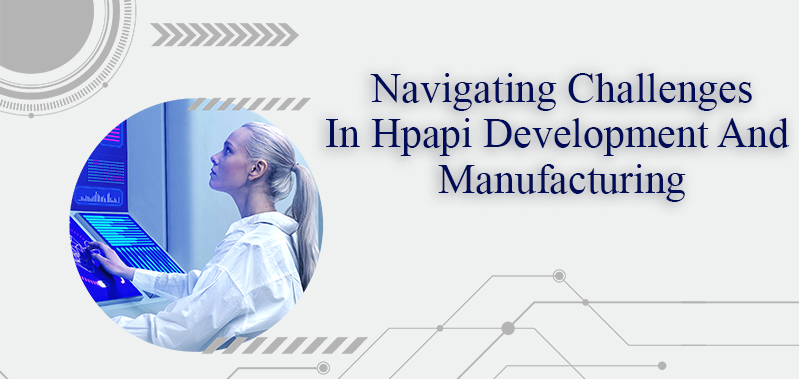
Navigating Challenges In HPAPI Development And Manufacturing
Highly potent active pharmaceutical ingredients (HPAPIs) transform targeted therapy, driving innovation across oncology, diabetes management, and central nervous system disorders. Representing over 30% of the drug development pipeline, HPAPIs are pivotal in modern medicine due to their unparalleled efficacy. However, their synthesis and handling involve significant risks, necessitating high containment facilities and stringent regulatory compliance to ensure safety and quality. This article examines the burgeoning HPAPI market, the critical containment strategies required for their production, and the regulatory framework essential for balancing their therapeutic promise with the complexities of their use.
HPAPI and What It Treats
Highly potent active pharmaceutical ingredients (HPAPIs) are compounds that offer substantial pharmacological benefits even at minimal doses. They are mainly used in the development of medications for serious diseases, with approximately 60% of HPAPI-based drugs focused on cancer treatment. Their high efficacy at low quantities makes them particularly effective, but this also brings about significant production challenges and safety concerns. The pursuit of new, targeted therapies has spurred the progress of HPAPIs, and currently, about 40% of authorized drugs are classified as high potency.
Recent advancements in targeted therapies and personalized medicine have broadened the use of Highly Potent Active Pharmaceutical Ingredients (HPAPIs), enabling precise and powerful treatments for a range of conditions. In oncology, HPAPIs play a crucial role in the development of drugs that focus on specific molecular pathways involved in cancer progression, including chemotherapy agents, targeted therapies, and immunotherapies.
For autoimmune disorders like rheumatoid arthritis, psoriasis, and multiple sclerosis, HPAPIs help modulate the immune response and reduce inflammation. Infectious diseases such as HIV/AIDS and hepatitis require potent antiviral medications that inhibit viral replication.
Additionally, rare diseases with complex underlying mechanisms benefit from highly targeted therapies using specific HPAPIs to address selected molecular defects. As HPAPIs continue to revolutionize targeted therapy, their synthesis and handling demand rigorous safety measures to balance their therapeutic promise with the complexities of their use.
Challenges In HPAPI Development And Manufacturing
The manufacturing of Highly Potent Active Pharmaceutical Ingredients (HPAPIs) presents several unique challenges. One primary challenge is ensuring safety and managing toxicity. HPAPIs are highly potent, and even minimal exposure can result in severe health issues for operators. To mitigate these risks, stringent containment measures, such as closed systems and specialized protective equipment, are essential. Additionally, establishing isolated manufacturing zones with dedicated air handling units and HEPA filtration systems is crucial to prevent cross-contamination and ensure worker safety.
Another significant challenge is the industry's lack of standardization. The absence of standardized classification and containment strategies necessitates comprehensive risk assessments for each HPAPI. This process is both time-consuming and costly, requiring detailed analysis to determine the appropriate safety measures. The variability in safety protocols across different manufacturers further complicates this issue, leading to inconsistencies and potential safety lapses.
Scalability is also a major hurdle in HPAPI manufacturing. Due to their high potency, HPAPIs are produced in small batch sizes, complicating the testing and validation of contamination measures. This small-scale production poses difficulties in scaling up from early molecule discovery to commercial manufacturing, requiring powerful equipment and strong relationships with outsourcing partners. Meeting market demand while minimizing financial risks associated with batch loss requires precise planning and robust production capabilities.
Outsourcing decisions adds another layer of complexity. While outsourcing to Contract Manufacturing Organizations (CMOs) or Contract Development and Manufacturing Organizations (CDMOs) can help overcome infrastructural challenges, it introduces risks in selecting competent partners. Ensuring these organizations have the expertise and equipment to handle highly potent compounds safely is critical. Moreover, maintaining compliance with evolving regulatory standards, rigorous quality control, and safeguarding intellectual property are essential considerations when opting for outsourcing. The integrity of the production chain and clear contractual agreements are vital to successful HPAPI manufacturing in partnership with external entities.
Overcoming the challenges in HPAPI development and manufacturing requires a multi-faceted approach. Accurate hazard assessment is crucial at the early stages to understand the risks associated with an HPAPI, as well as to determine occupational exposure limits (OEL) and operational exposure banding (OEB) to guide safety measures. Advanced engineering controls, such as specialized containment equipment and ventilation systems, are essential to minimize exposure and prevent contamination, ensuring a safe work environment. Additionally, implementing stringent administrative protocols and comprehensive training programs, alongside the use of personal protective equipment (PPE) like respiratory masks, gloves, and laboratory suits, provides critical safety for operators and further mitigates risks.




